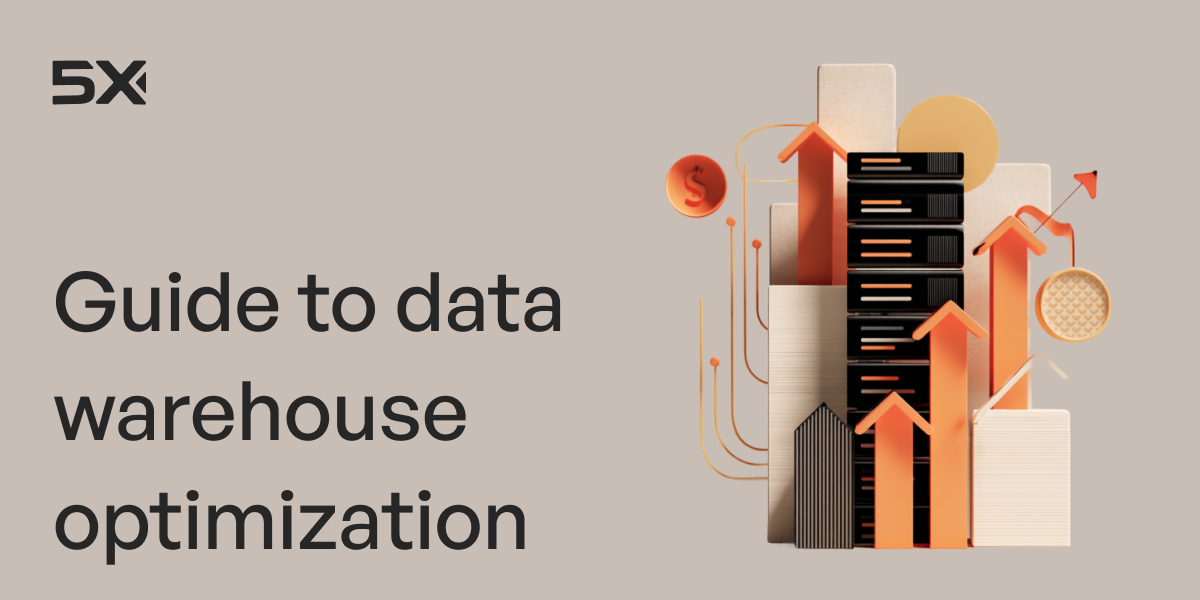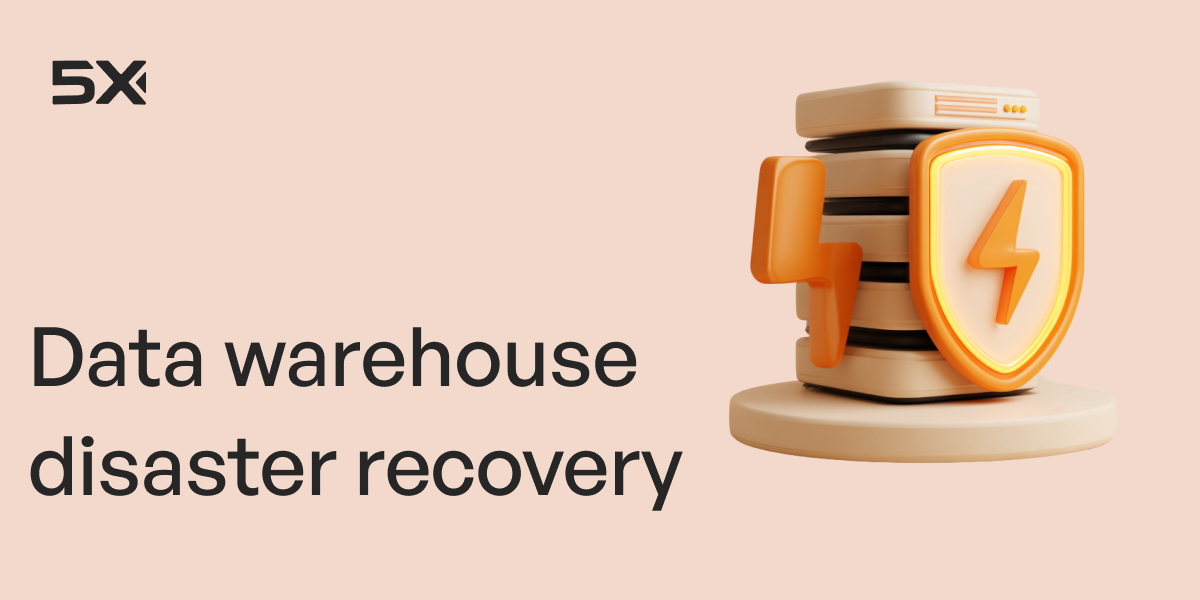Table of Contents
TL; DR
Supply chains aren’t just made of trucks, warehouses, and purchase orders anymore, they’re made of data. It generates information on every order, shipment, delay, or stock movement.
The problem is that most supply chain data is scattered, messy, and too complex to manage manually. That’s where AI helps companies go from firefighting to foresight.
In this blog, we’ll walk you through how AI works in supply chains, where it drives the most value, and which use cases are delivering real, measurable impact right now. Whether you’re just starting or scaling your AI strategy, this guide will help you connect the dots.
What types of data is collected in your supply chains?
To understand how AI delivers results in supply chains, you must first understand the kind of data it consumes. Here’s a snapshot of what’s typically feeding into your supply chain systems:
- Inventory data: Current stock levels, reorder points, storage locations
- Supplier performance data: Delivery delays, quality issues, on-time scores
- Logistics and transport data: Fuel usage, route histories, delivery times, carrier efficiency
- Customer demand data: Order patterns, return rates, seasonality, customer preferences
- Weather and traffic data: Thunderstorm or crowded highways derail delivery SLAs
- Production and machinery data: Downtimes, maintenance logs, throughput speeds
- Supplier cost data: Raw material prices, labor costs, shipping rates
- Macroeconomic data: Commodity price trends, inflation spikes, and broader market shifts
- Regulatory and compliance data: Trade policies, environmental norms, import/export laws
- IoT sensor data: Temperature, humidity, and equipment health from your warehouse to the delivery truck

AI is valuable because it manages these moving parts in ways that no human can keep up. Once you feed all this data into an AI data platform, here’s what starts to happen:
- Patterns emerge: AI identifies relationships humans may not catch
- Risks are flagged: Missed deliveries, capacity issues, and supplier delays are spotted early
- Processes get optimized: Whether it’s inventory levels, routing, or reordering, AI continuously fine-tunes operations
- Insights are extracted: Not buried in dashboards, but surfaced in real-time, ready for action
13 real-world AI use cases in supply chains
Whether it’s routing a delivery more efficiently, processing a PO faster, or predicting a stockout before it happens, AI quietly powers the systems that keep global supply chains moving.
Here are 13 ways that AI is showing up in supply chain automation as an everyday necessity.
1. Back-office work: Automated, finally
Every supply chain team has been buried under paperwork at some point. Invoices, purchase orders, approvals, and reports are all necessary. But it's also painfully slow and prone to human error.
AI streamlines this. With a mix of RPA (Robotic Process Automation), conversational AI, and data analytics, you can automate the tedious stuff like:
- Invoice matching
- Purchase order generation
- Manual data entry
The best part is that it doesn’t just free up time, but it also cuts down errors and improves turnaround. Now, your team can shift focus from “Are we logged into the right spreadsheet?” to “How do we negotiate better with our suppliers?”
2. Logistics that self-optimize
Delays in freight. Last-mile chaos. Inefficient routes. We’ve all been there.
AI in logistics acts like a smart brain behind the scenes. It pulls in real-time data from GPS, traffic systems, weather updates, and carrier performance to:
- Predict delays before they happen
- Optimize delivery routes dynamically
- Improve visibility across the delivery journey
This results in fewer missed deliveries, better ETAs, and a whole lot less firefighting.
3. Smarter warehouses without extra headcount
Warehousing is where speed meets complexity, and where AI truly shines. Instead of relying solely on human labor, companies are now deploying:
- AI-powered robots that pick, pack, and sort items
- Automated conveyors and drones for faster movement
- Machine learning algorithms to redesign floor layouts for efficiency
These systems work 24/7, don’t need breaks, and scale during peak seasons without scrambling for labor. For companies facing high attrition or labor shortages, it’s a game-changer.
4. Quality checks, reimagined with AI
Visual inspections are slow, subjective, and inconsistent, especially across multiple shifts or facilities.
But with computer vision, AI systems can now spot defects in real time using camera feeds, flag inconsistencies in product appearance or packaging, and improve with each inspection
This means higher consistency, fewer product recalls, and stronger customer trust.
5. Inventory that manages itself
Keeping track of inventory across regions, warehouses, and partners isn’t just hard, it’s risky. Too much inventory, and you tie up capital. Too little, and you risk stockouts.
AI bridges the gap by:
- Monitoring inventory in real time using sensors and system integrations
- Analyzing trends and external variables (like promotions, weather, or market demand)
- Automatically generating reorder alerts or placing purchase orders
6. Optimization that gets smarter over time
Forecasting demand isn’t a one-and-done task. It changes daily.
AI models help by:
- Constantly learning from new sales, supplier, and customer data
- Simulating different scenarios (What if demand surges? What if a vendor goes offline?)
- Recommending inventory policies that balance cost and availability
In simple terms: you carry less inventory, reduce storage costs, and still hit your fill rates.
7. Scenario planning you can actually act on
Imagine this: a port shuts down, and you need to figure out the impact on your network fast.
With generative AI, you don’t have to build models manually. You can:
- Simulate “what-if” scenarios
- Instantly see how disruptions affect your delivery timelines or inventory positions
- Get summarized insights, not just rows of raw data
It’s like having a digital advisor that’s always up to speed.
8. Forecasting that gets granular
You can’t treat all regions the same. Buying behavior in Mumbai looks nothing like demand in Melbourne. AI tools can now create hyper-local forecasts by analyzing:
- Local events
- Regional weather patterns
- Buying behavior and cultural factors
That means more accurate stocking, better fulfillment, and happier customers, wherever they are.
9. Stopping the bullwhip before it starts
Ever experienced a minor spike in demand ripple upstream and wreak havoc? That’s the bullwhip effect, and it’s costly. AI reduces this by:
- Giving every node of the supply chain real-time visibility
- Enabling smarter collaboration between suppliers, distributors, and retailers
- Aligning demand planning across the ecosystem
It keeps the whole network calm, balanced, and predictable.
10. Better supplier collaboration with less guesswork
Suppliers are critical, but managing them often feels like herding cats. AI makes this smoother by:
- Analyzing delivery performance, quality trends, and compliance data
- Flagging issues before they turn into problems
- Automating routine check-ins and alerts
You get faster resolution, stronger relationships, and better contract performance.
11. Greener supply chains, backed by data
Most emissions come from your supply chain. And sustainability isn’t optional anymore.
AI helps you track, reduce, and report emissions by:
- Calculating Scope 3 emissions across sourcing, transport, and vendors
- Highlighting carbon hotspots
- Recommending lower-impact suppliers or routes
With tightening ESG regulations, this isn’t just good for the planet, but also critical for compliance.
12. Circular flows made practical
Returns and reverse logistics used to be an afterthought. Now, they’re a sustainability opportunity.
AI helps manage circular supply chains by:
- Predicting return volumes
- Sorting products for reuse, repair, or recycling
- Making decisions based on real-time product condition and resale value
It keeps goods in circulation longer, reducing waste and recapturing value.
13. Predicting disruption before it hits your P&L
From geopolitical events to cyberattacks, disruption is a constant.
AI enables proactive risk management by:
- Scanning thousands of data points such as news, weather, social media, customs feeds
- Flagging disruptions across suppliers, ports, or logistics partners
- Suggesting mitigation strategies and backup plans
Should you use AI in your supply chain business?
Using AI in the supply chain isn't all-or-nothing. Start where it’s safe, prove value fast, and scale as your systems and people get smarter.
AI has massive potential to transform supply chains, but not every process is ready for automation on Day 1. The key is to start in high-need, low-risk areas where AI can deliver quick, safe wins such as transportation management, invoice and documentation processing, and scenario planning.
These areas are perfect launchpads. They generate tons of data, have clear guardrails, and if something goes wrong, the fallout is manageable, and the AI gets smarter with each cycle.
But not everything should be handed off to algorithms just yet. Inventory planning, BOM management, and order execution are high-risk zones. A bad AI call here could ripple through your network, causing compliance issues, stockouts, or worse.
As AI continues to penetrate every aspect of the supply chain, the temptation exists to use it for everything and anything. But just because we can, doesn’t mean you should. We’ll need to be prudent in high-risk areas such as Inventory Planning, BOM Management and Order Management as a bad AI recommendation here could ripple through your network, creating costly disruptions, or even jeopardize compliance and product integrity.
Tycho Bueninck, Operations Director, Phillip Morris International
Power smarter supply chains with 5X
It’s one thing to understand the potential of AI in supply chains. It’s another to actually harness it, especially when your systems are scattered across procurement software, logistics platforms, and inventory spreadsheets. That’s where 5X comes in.
5X is the supply chain transformation accelerator that helps you turn fragmented logistics and inventory data into measurable results. While most companies struggle with disconnected systems and underutilized data, 5X brings it all together by unifying your supply chain data into a single, AI-ready layer that drives action, not just insights.
Unlike generic data platforms, 5X offers AI modules purpose-built for supply chain pain points:
- Demand forecasting that adapts to real-world shifts
- Inventory optimization that reduces overstock and stockouts
- Waste reduction that translates directly to cost savings
With end-to-end visibility, 5X connects your ERP, warehouse systems, and transportation networks to power real-time decisions. And you won’t have to wait months to see value.
Building a data platform doesn’t have to be hectic. Spending over four months and 20% dev time just to set up your data platform is ridiculous. Make 5X your data partner with faster setups, lower upfront costs, and 0% dev time. Let your data engineering team focus on actioning insights, not building infrastructure ;)
Book a free consultationHere are some next steps you can take:
- Want to see it in action? Request a free demo.
- Want more guidance on using Preset via 5X? Explore our Help Docs.
- Ready to consolidate your data pipeline? Chat with us now.
Get notified when a new article is released
Turn supply chain chaos into clarity with AI-ready data from 5X.
Turn supply chain chaos into clarity with AI-ready data from 5X.

How retail leaders unlock hidden profits and 10% margins
Retailers are sitting on untapped profit opportunities—through pricing, inventory, and procurement. Find out how to uncover these hidden gains in our free webinar.
Save your spot









%201.svg)









